Stepping up your digital content creation in 2024? You’re not alone. In fact, 50% of marketers plan on increasing their investment in content marketing this year.
Whether it’s blog content, videos, social media posts, or podcasts, content production is an excellent way to reach your target audience, build brand awareness, and position yourself as a leader in your field.
To set you up for success, I’ve pulled together 12 dos and don’ts of content production. And believe me, I’ve learned some of these the hard way.
So without further ado, let’s start with some definite dos!
1. DO get to know your audience
The first step in your content production process should be getting to know your audience. Putting in the legwork early on will help you to tailor your content to their needs, preferences, and interests.
Take the time to research your target audience. Some key questions to ask include:
- What’s their demographic?
- What are their hobbies and interests?
- What challenges or pain points do they face?
- Which social media platforms do they use?
- When and how do they engage with content?
The answers to these questions will help to shape your content so that it targets the right people, in the right places, at the right time.
2. DO create content that’s truly valuable
It’s no use producing content that doesn’t provide real value for your audience. Trust me, if you’re going through the motions just to tick boxes, your audience will be able to tell.
Whether it’s to educate, inform, or entertain, make sure every piece of content serves a purpose. And make sure that purpose correlates with your audience’s needs.
For example, the purpose of this blog post is to help you understand what to do (and not do) as part of your creative content production process. By providing actionable tips, I want you to come away feeling educated and ready to improve your current process with your new-found know-how.
Creating content that is truly valuable helps to build trust and credibility with your audience, positioning you as a leader in your field. It also keeps people coming back for more – if they find value in your content, they’re more likely to return.

Image: HubSpot
3. DO optimize for search engines
When you’re spending all that precious time producing content, you want to give it the best chance of being seen, right?
With that in mind, search engine optimization (SEO) is a major DO of content production. And that’s the case whether you’re creating written content, video content, podcasts – the lot!
By incorporating relevant keywords and optimizing title tags, meta descriptions, and headers, you’ll help to improve your content’s ranking on search engines (like Google). This will ideally boost your content to the top of the results page so that it’s more likely to be seen.
Which means more potential for organic traffic, and more potential conversions.
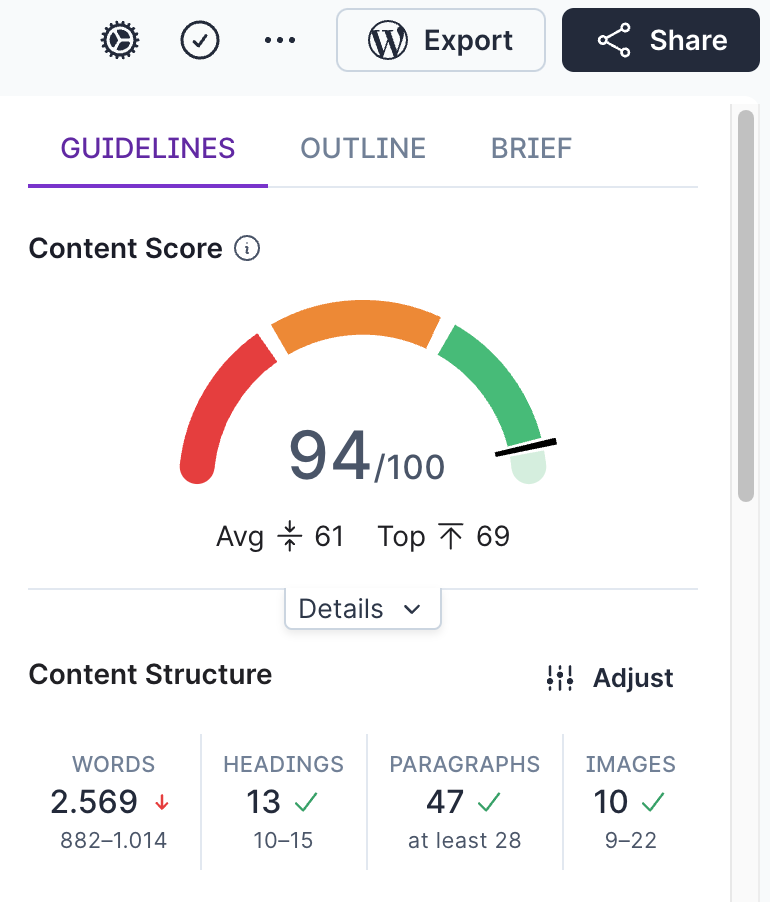
Image: Surfer SEO
4. DO create an effective content production process
Without a process in place, content creation becomes completely and utterly chaotic. For everyone involved.
Missed deadlines. Silly mistakes. Unnecessary fallouts.
That’s all avoidable with an effective content production process. A well-defined process makes sure everyone’s on the same page: the wider content team, your creative team of writers and graphic designers, your clients. With a process in place, there’s less room for confusion throughout the entire process.
A typical content production process looks something like this:
- Ideation and research
- Briefing and outlining
- Content creation
- Review and editing
- Approval
- Publishing and promoting
- Measuring
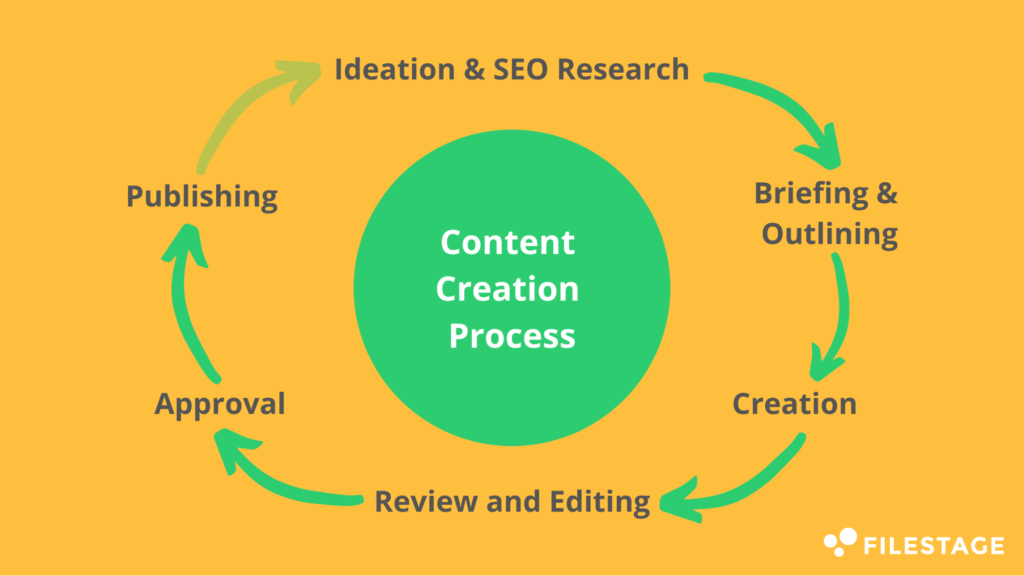
Get your creative process down to a T, and your job becomes 100,000 times easier and more enjoyable. No more missed deadlines. No more silly mistakes. No more unnecessary fallout.
Your first step? Finding the right content automation tool to streamline tasks and make your workflows more efficient.
5. DO include a content review process
Speaking of silly mistakes, content review is an essential part of the content production process. Without one, those mistakes can slip through the cracks, resulting in a whole load of aggro (and a whole waste of money) down the line.
Using a content review and approval tool like Filestage helps to streamline the process, giving you one centralized place to collect feedback from all of your stakeholders.
With Filestage, you can:
- Keep track of all your content assets in one place
- Create reviewer groups to invite the right people to the process at the right time
- Set due dates to keep your projects on track
- View version history to keep tabs on previous comments and see what’s changed
- Leave in-context comments for clear feedback that shows up in real time
- Add visual annotations to bring your comments to life and help you express yourself better
- Keep track of who’s shared their feedback, and who you’re still waiting to hear from
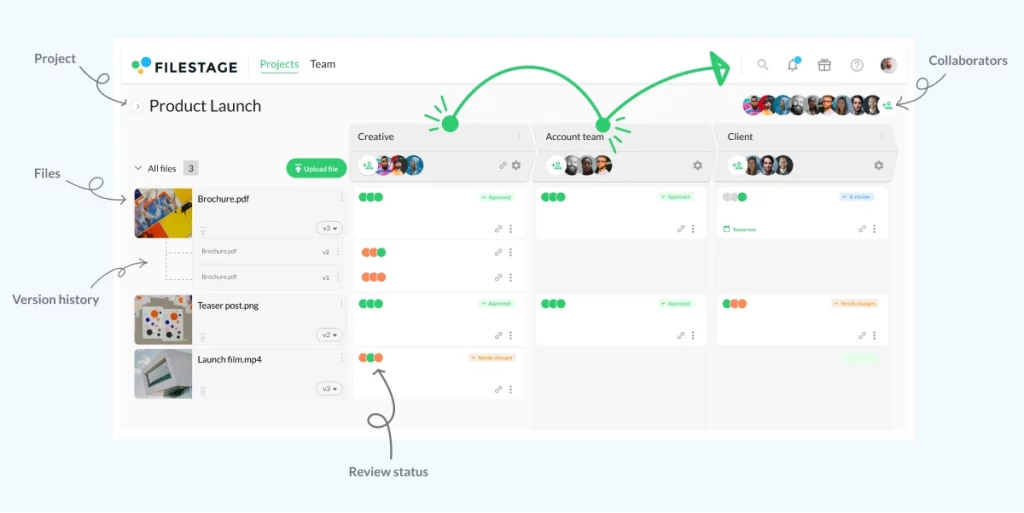
Supercharge your marketing reviews
Share, review, and approve all your content in one place with Filestage.
6. DO put together a content calendar
When you’re planning your upcoming content production, nothing beats putting it into a content calendar. A content calendar will quickly become your holy grail, helping you to stay organized, plan strategically, and manage resources effectively.
Here are just some of the ways a content calendar can help:
- Consistency – A content calendar helps you maintain a consistent publishing schedule. Consistency is key for audience engagement and loyalty, as users come to expect and anticipate regular updates.
- Strategic planning – It helps you to plan strategically, making sure that your content aligns with broader business goals, upcoming marketing campaigns, and industry trends.
- Efficient workflow – Your content calendar provides a super-clear overview of upcoming tasks, deadlines, and responsibilities, leading to better organization and a more efficient content workflow.
- Resource management – Scheduling content in advance allows you and your content team to allocate time, talent, and other resources efficiently, preventing last-minute rushes.
Once you’ve put together a content calendar for the first time, you’ll never look back. I guarantee it.

Image: CoSchedule
7. DO harness the power of software
There’s a whole host of tools at your disposal to help with just about every aspect of content production. From ideation through to measurement, the right tools help to streamline tasks, improve your workflows, and enhance productivity.
Here are some of the tools you might want to consider:
Writing tools
Various platforms like Grammarly, Hemingway Editor, and Google Docs help to improve your written content by checking your grammar and spelling, and suggesting improvements.

Image: Hemingway Editor
Design tools
Graphic design tools like Canva, Adobe Photoshop, and Adobe Illustrator make it easier for even non-designers to create eye-catching graphics.
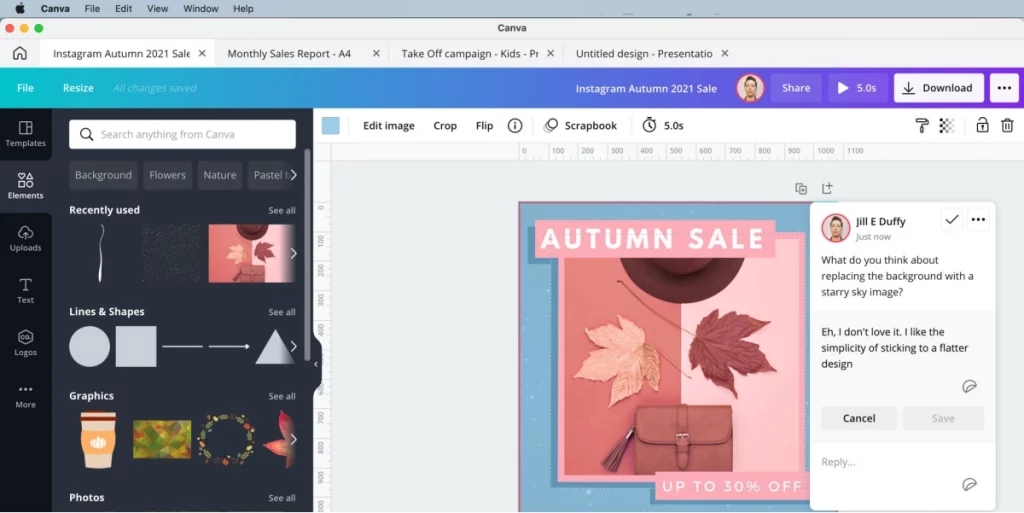
Image: Canva
Social media management tools
Platforms like Hootsuite, Buffer, and Sprout Social help with managing social media accounts, scheduling posts, and monitoring performance.
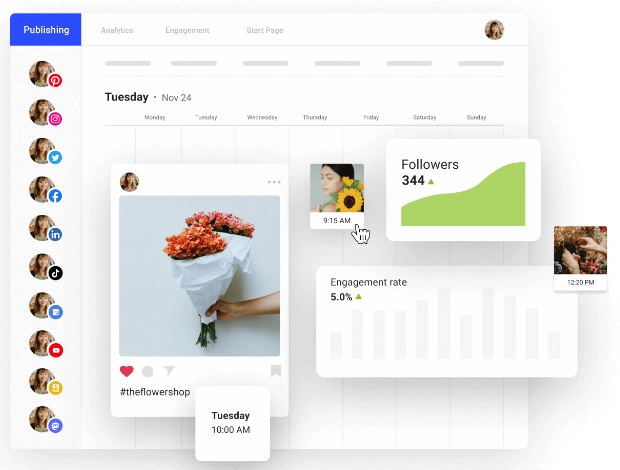
Image: Buffer
SEO tools
Tools like Google Analytics, SEMrush, and Ahrefs help with keyword research, backlink analysis, and measuring performance.

Image: Ahrefs
Review and approval software
Content review and approval software like Filestage makes the process of reviewing content so much more straightforward. It helps you to collect feedback on all your assets in one place, so that you can make edits and get your content approved quickly.
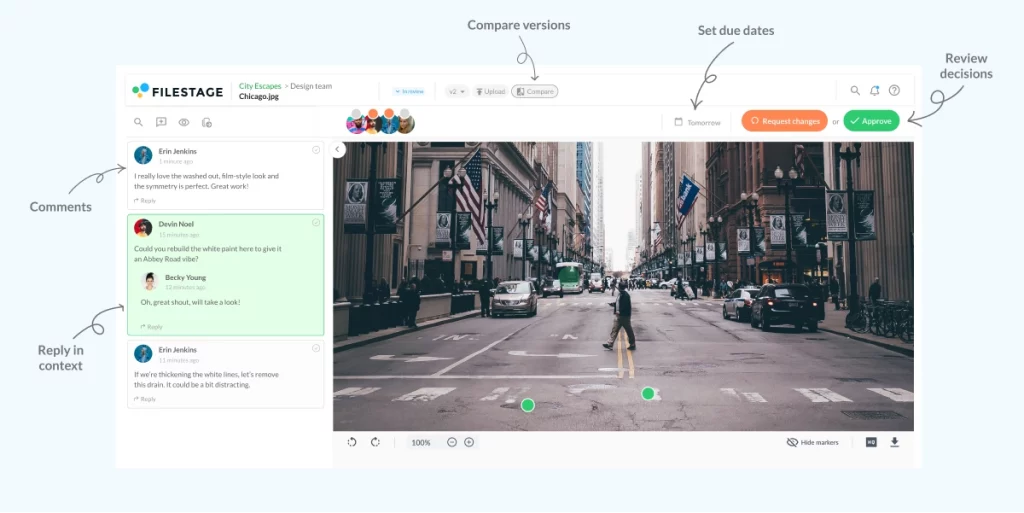
Supercharge your marketing reviews
Share, review, and approve all your content in one place with Filestage.
Collaboration software
Different collaboration tools can help you and your team to work together effectively throughout the content production process. For example:
- Filestage helps with collaborative review and approval
- Asana helps with overall project management
- Slack helps with day-to-day communication
Discover more of the best collaboration tools for every aspect of content production.
8. DO make the most of opportunities for repurposing
Content repurposing is the process of taking content you’ve already created, and presenting it in a new format to expand its reach. It’s a great strategy to have in your arsenal as it helps you to get the most you possibly can out of one piece of content, or one content idea.
After all, the hardest part is often coming up with content ideas in the first place.
Here are some ideas of how you could repurpose your content:
- Transform video and podcast transcripts into blog posts
- Extract quotes from blog posts for social media
- Create a podcast episode based on a blog post you’ve written
- Take short snippets of a longer video to share on social media
- Develop video tutorials from written how-to guides
- Turn user-generated content into testimonials
By taking your existing, high-quality content and presenting it in a different content format on other relevant channels, you’re putting in minimal extra input and getting the best possible ROI.
Those are the dos, and now here are some all-important don’ts…
9. DON’T keyword stuff
Keywords are a fundamental part of SEO, but a big mistake that many content creators make is going overboard and committing a content crime known as keyword stuffing.
Essentially, this involves cramming an excessive number of keywords into your copy, in a way that stops your content from reading naturally. When people do this, they’re aiming to trick search engines into seeing that page as highly relevant to a specific search query.
But Google (other search engines are available) is far too clever for that.
In fact, keyword stuffing is a penalizable offense, so chances are your page will end up ranking poorly (or not at all) anyway.
Instead, focus on creating high-quality content that provides genuine value to users, integrating keywords sparingly, and only when it makes sense to do so.
10. DON’T plagiarize
This might seem like a no brainer, but plagiarizing or copying other people’s content is an absolute no-no too.
Not only is it illegal in some countries and states, or poor form at best, a lack of original content also signifies to your audience that you’re not original, knowledgeable, or trustworthy.
Originality is crucial for establishing your brand and building trust with your target audience. So whatever you do, make sure your content is yours, all yours, and nothing but yours.

Image: Grammarly
11. DON’T neglect quality in favor of quantity
We all know quality is more important than quantity, but it can be easy to fall into the trap of creating large amounts of content quickly. Especially when there’s pressure from the powers that be to show results.
But try to remember that it’s much better to have a few well-produced pieces of content than lots of low-quality ones. Those high-quality pieces of content are far more likely to provide value to your target audience, boosting your brand reputation and credibility.
They’re also more likely to rank well in search results, to be shared and engaged with on social media platforms, and ultimately lead to more conversions.
12. DON’T ignore analytics
Ignoring analytics is like driving blindfolded. You need a clear view of content performance and user behavior to make informed and strategic content decisions. Otherwise, it’s just a guessing game of what you think works best.
Different content formats can be measured in different ways. Here are some of the most commonly used key performance indicators (KPIs) for different channels.
Social media posts
Typical KPIs for social media posts include:
- Reach – The number of people who see your content
- Engagement – Likes, comments, and shares
- Click-through rate (CTR) – The percentage of users who click on a link or call-to-action in your post
- Conversion rate – How many users take a desired action after engaging with your post
Blog posts
Typical KPIs for blog posts include:
- Page views – The total number of times your blog post has been viewed
- Unique visitors – The number of individual users who have visited your blog post
- Time on page – The average time users spend reading your blog post
- Bounce rate – The percentage of visitors who navigate away from the blog post without further interaction
- CTR – The percentage of users who click on a link within your blog post, taking them to another page
- Conversion rate – The percentage of users who take a certain desired action, such as sign up or make a purchase
Audio and video content
Typical KPIs for audio and video content include:
- Views/listens – The number of times you podcast or video is streamed or viewed
- Unique viewers/listeners – The number of individual users who have watched or listened to your content
- Watch/listen time – How long users spend engaging with your content
- Subscriber growth – How many people newly subscribe to your channel over time
Regularly monitoring your content helps you to refine and optimize your content marketing strategy. It helps identify what works and what doesn’t, helping you to make data-driven decisions for your next steps.
Final thoughts
And there you have it. Twelve very important dos and don’ts of content production. Bear these in mind throughout the content production process, and you’ll boost your chances of reaching your target audience, engaging them with valuable content, and getting those all-important conversions.
If you’d like to see for yourself how Filestage can help with review and approval in the content production process, you can start a free trial here →










